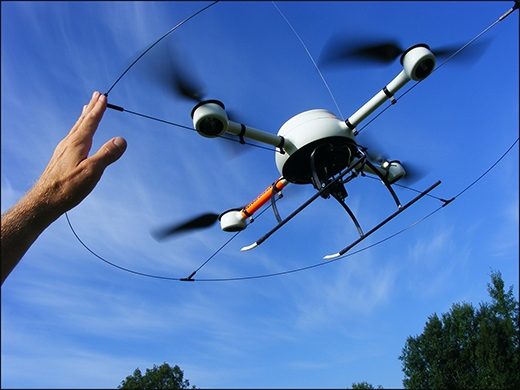Abandoning a sinking ship is extremely difficult. Often times, an incalculable amount of time and money has been spent to keep the ship afloat and its human nature to resist the scenario in which there is nothing to show for such an investment. It takes a certain kind of strength and dignity to admit defeat and move on. But, you live to fight another day.
This is the point it has come to for the FAA in its efforts to regulate drones in the National Airspace (NAS).
Last week, the U.S. Department of Transportation’s Office of Inspector General published an audit report regarding the FAA’s progress in UAS integration. The 30 page report brutally dissects the FAA’s shortcomings and can boiled down into one sentence:
While it is certain that the FAA will accommodate UAS operations at limited locations, it is uncertain when and if full integration of UAS into the NAS will occur.
The FAA has been very upfront about missing their deadlines but this latest report suggests the administration may be flat out incapable of fulfilling their Congressional mandate.
The ship is all but sunk.
This audit was the last straw and it has become clear; if the FAA can’t get the rules written, the time has come to open the skies and then retrofit the regulations.
Its not ideal, but what other option is there? To continue the hilariously inefficient “zero tolerance” policy the FAA is currently using would be a joke.
The economic benefits of UAS are becoming clearer every day and the rest of the world is already embracing those benefits so time is of the essence. We need to run before we can walk.
Before you dismiss this as an ill-conceived and dangerous proposal consider:
Transportation technology went mainstream just fine without government intervention.
The FAA is trying to shoehorn current automobile and aviation regulations into their approach to regulating UAS.
The first American gas-powered automobile was built in 1893 and the first real attempts to regulate their use didn’t appear until nearly ten years later on the state level. Traffic codes weren’t federally standardized until 1926. The development of roads for those automobiles were state controlled (and funded) projects and, as a result “development of adequate automobile roads lagged well behind the diffusion of the motor vehicle in the United States and that the automobile was widely adopted here despite the relative scarcity of suitable roads for its use. . . . American automobiles were improved much more rapidly than the streets and highways on which they were driven.” – Professor James Flink, America Adopts the Automobile.
The Wright brothers first powered flight took place in 1903. Aviation wasn’t addressed on the federal level until the passing of the Air Commerce Act of 1926, which facilitated the creation of a profitable commercial airline industry. A body wasn’t created to regulate this industry until 1958. In the 30 year interim, the industry came into its own lead by companies like Pan American Airways, United Airlines, and American Airlines.
Nobody Wants the Drone Industry Regulated More Than the Drone Industry
The people who see the potential in commercial drones, both the hardware manufacturers and service providers, want the industry to take off. It is therefore in their best interest to prove that their technology is both safe and practical. Since the FAA has been less than helpful in providing guidelines, these companies have taken it upon themselves to make their drones as safe as possible.
The latest models of DJI’s Phantom 2 Vision prevents users from flying within certain distances of an airport. Companies like Panoptes are going to market with sense and avoid hardware that prevent drones from crashing into its surroundings. And most UAS include a safety feature wherein the drone either lands itself, returns home, notifies the pilot or all the above when its batteries run low.
In other words, the commercial drone community is sort of regulating itself.
Much like the automobile and airplane industries of the early 20th century, no one is going to buy into the UAS industry until the products and/or services are shown to be safe.
There is still a long way to go and the day will come when a drone falls out of the sky and lands on someone. Just like there was a first fatal car crash and a first fatal airplane collision, there is going to be a first fatal drone catastrophe.
But, if Jeff Bezos went back on 60 Minutes tomorrow and demonstrated Prime Air’s 99% effective sense and avoid technology/air traffic control system and then said “We can start deliveries today,” there would be an immediate demand for that service.
Amazon doesn’t want the bad press or the lawsuit that would come from a rogue drone falling out of the sky and killing someone, so you can be sure that when Bezos inevitably makes this announcement, there will be mind-bogglingly sophisticated safety measures in place -which can then be shared with the FAA to standardize UAS safety regulations.
So, if the FAA can’t get the job done, why should they be allowed to stand in the way of progress? Putting the cart of before the horse of has worked in the past. There will be turbulence, but at least we would be on a direct flight. And a third transportation pun-analogy… (punalogy?)
Seriously though, the FAA had a fair chance to shit and now its time to get off the pot.
Alan is serial entrepreneur, active angel investor, and a drone enthusiast. He co-founded DRONELIFE.com to address the emerging commercial market for drones and drone technology. Prior to DRONELIFE.com, Alan co-founded Where.com, ThinkingScreen Media, and Nurse.com. Recently, Alan has co-founded Crowditz.com, a leader in Equity Crowdfunding Data, Analytics, and Insights. Alan can be reached at alan(at)dronelife.com
